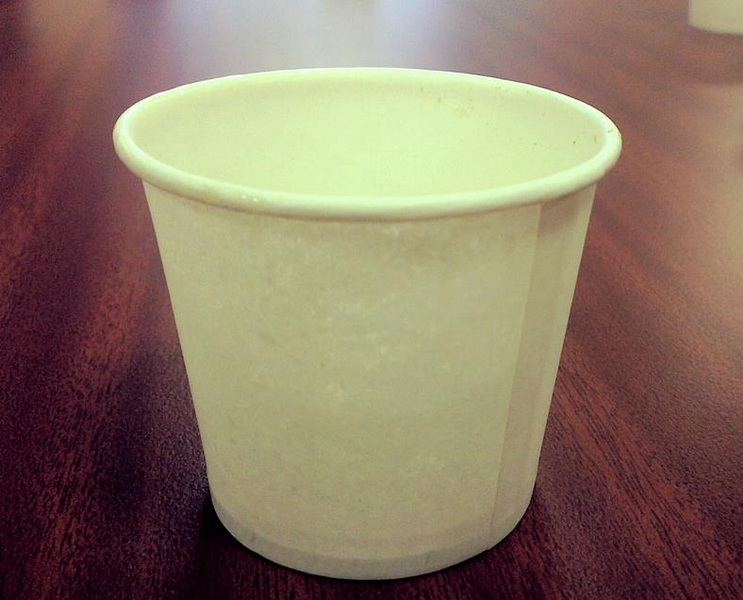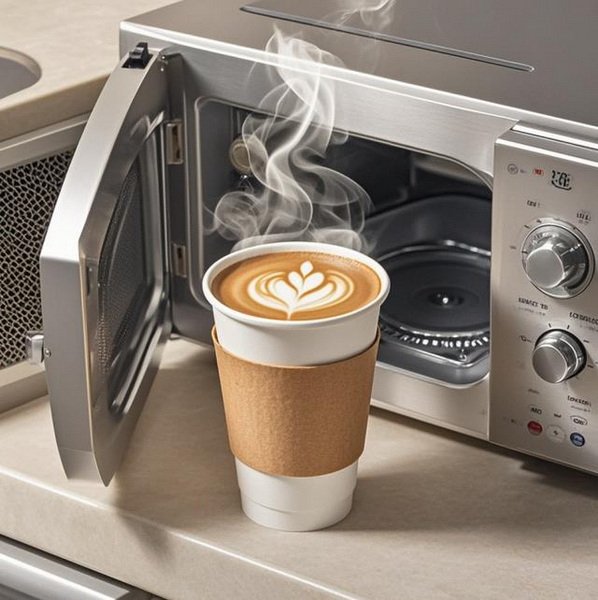
Content Menu
● 1. Raw Material Selection
● 2. Pulp Preparation
● 3. Printing
● 4. Cutting and Die-Cutting
● 5. Cup Forming
● 6. Curling and Finishing Touches
● 7. Coating for Leak Resistance
● 8. Packaging
● 9. Environmental Considerations
● 10. Innovations in Sustainability
● Conclusion
● FAQ
>> 1. What materials are used in making disposable paper cups?
>> 2. Are disposable paper cups recyclable?
>> 3. How long does it take to manufacture a paper cup?
>> 4. What environmental impacts are associated with paper cup production?
>> 5. Are there eco-friendly alternatives to traditional disposable paper cups?
● Citations:
Disposable paper cups are an essential part of contemporary consumer culture, widely used in coffee shops, offices, and various events. Their convenience and perceived environmental advantages have made them a popular choice for beverages. However, many people may not fully understand the intricate process involved in their manufacturing. This article provides a comprehensive overview of how disposable paper cups are made, examining the materials used, the machinery involved, and the environmental implications of their production.

1. Raw Material Selection
The journey of a disposable paper cup begins with the selection of raw materials. The primary material used is food-grade paperboard, which is typically derived from wood pulp. The quality of the paperboard is crucial as it determines the strength and durability of the final product.
- Wood Pulp: The most common raw material, sourced from trees.
- Recycled Paper: Increasingly used to reduce environmental impact.
- Cotton Linters: Sometimes included for added strength.
Once the raw materials are selected, they undergo several processing steps to prepare them for cup production.
2. Pulp Preparation
The first major step in manufacturing disposable paper cups is preparing the pulp. This involves:
- Mixing: Wood fibers are mixed with water to create a slurry.
- Cooking: The slurry is cooked in large vats to break down the fibers.
- Filtering: The cooked mixture is filtered to remove impurities and lignin, which can affect color and strength.
- Bleaching: To achieve a white or desired color, the pulp is bleached.
This pulp is then dried and rolled into large sheets or converted into rolls for further processing.
3. Printing
Before shaping the cups, manufacturers often print designs or logos on the paperboard. This process typically involves:
- Flexographic Printing: A common method where ink is applied in layers as the paperboard moves through printing cylinders.
- Quality Control: Ensuring that colors and designs are accurate before proceeding to cutting.
The printed sheets are then prepared for cutting into cup blanks.
4. Cutting and Die-Cutting
Once the paperboard has been printed, it is cut into specific shapes known as "cup blanks." This step includes:
- Die-Cutting Machines: These machines punch out flat shapes from the printed sheets based on predetermined dimensions.
- Cup Blanks Formation: Each blank will eventually be formed into a cup.
This process ensures that each blank has precise dimensions necessary for forming a sturdy cup.
5. Cup Forming
The next stage involves transforming these flat blanks into actual cups. This process includes several key steps:
- Cup Forming Machine: This machine wraps each blank around a mandrel (a cylindrical mold) using mechanical jaws.
- Sealing Edges: Heat is applied to seal the edges together, forming a cylindrical shape.
- Bottom Insertion: A pre-cut bottom piece is inserted into each cup and sealed using heat and pressure to ensure it is leak-proof.
At this point, the basic shape of the cup is complete but requires additional steps for finalization.

6. Curling and Finishing Touches
To make drinking from the cup comfortable and prevent spills, additional finishing touches are applied:
- Rim Curling: The top edge of each cup is curled under using specialized tools to create a smooth rim.
- Quality Testing: Random samples are tested for leaks and structural integrity before packaging.
This ensures that only high-quality cups make it to consumers.
7. Coating for Leak Resistance
To make the cups leak-proof and suitable for holding hot and cold beverages, a thin layer of polyethene (PE) coating is applied to the cup's interior surface. This coating acts as a barrier, preventing liquid from seeping through the paperboard. The PE coating process is carefully regulated to ensure that the cups meet strict food safety standards.
Recent innovations have introduced bio-based coatings made from renewable resources like corn starch or sugarcane, offering improved degradability compared to traditional plastic coatings[1][9].
8. Packaging
After passing quality control checks, the cups are packaged for distribution:
- Automatic Packaging Machines: These machines stack and wrap cups in bundles for easy transport.
- Labeling: Some manufacturers add labels indicating product information or branding before shipping.
Proper packaging protects the cups during transportation and storage until they reach retailers or consumers.
9. Environmental Considerations
While disposable paper cups are often marketed as more environmentally friendly than plastic alternatives, their production does have environmental impacts:
- Resource Use: Producing paper cups requires significant amounts of water and energy.
- Recyclability Issues: Many disposable cups have a plastic lining that complicates recycling processes.
Reports indicate that less than 1% of disposable coffee cups are actually recycled[3][6]. The production process emits greenhouse gases and other pollutants, contributing to global warming[3].
In addition to these concerns, deforestation plays a significant role in paper cup production. Over 20 million trees are cut down each year to produce single-use paper cups[3]. The loss of these trees means less carbon dioxide is absorbed from our atmosphere, further exacerbating pollution issues.
10. Innovations in Sustainability
As awareness grows about sustainability issues related to disposable cups, innovations continue to emerge:
- Biodegradable Materials: Companies are developing biodegradable options that break down more easily in landfills.
- Reusable Designs: Some manufacturers are creating reusable paper cups designed to withstand multiple uses without compromising functionality[9].
These innovations aim not only to reduce waste but also to align with consumer demand for sustainable products.
Conclusion
The manufacturing process of disposable paper cups involves multiple intricate steps from raw material selection through various stages of processing to packaging. While they offer convenience and potential environmental benefits over plastic cups, it's essential to consider their overall ecological footprint. As awareness grows about sustainability issues related to disposable products, innovations in materials and processes continue to evolve in an effort to reduce waste and promote recycling in the industry.

FAQ
1. What materials are used in making disposable paper cups?
Disposable paper cups are primarily made from food-grade paperboard derived from wood pulp, along with recycled paper and sometimes cotton linters for added strength.
2. Are disposable paper cups recyclable?
While many disposable paper cups can be recycled, those with plastic linings complicate recycling efforts. It's important to check local recycling guidelines for proper disposal methods.
3. How long does it take to manufacture a paper cup?
The entire manufacturing process can take about one minute per cup once all materials are prepared and machinery is set up.
4. What environmental impacts are associated with paper cup production?
The production of paper cups requires significant water and energy resources, contributing to greenhouse gas emissions. Additionally, improper disposal can lead to waste management issues.
5. Are there eco-friendly alternatives to traditional disposable paper cups?
Yes, there are eco-friendly alternatives being developed that use biodegradable materials or improved designs that enhance recyclability without compromising functionality.
Citations:
[1] https://greenfeel.co.uk/blog/info/how-paper-cups-are-made-manufacturing-process-quality-control
[2] https://gmz.ltd/the-life-of-a-paper-cup/
[3] https://huskee.co/blog/the-environmental-effect-of-disposable-coffee-cups/
[4] https://insights.made-in-china.com/The-Future-of-Paper-Cup-Machines-Meeting-Evolving-User-Needs-and-Embracing-Technological-Advancements_xtRTrnUGNEIW.html
[5] https://topcupfactory.com/how-are-paper-cups-manufactured/
[6] https://www.sweetflavorfl.com/blog/what-are-the-environmental-impacts-of-disposable-coffee-cups-n26
[7] https://thegoodcup.world
[8] https://www.youtube.com/watch?v=-mclkw3TZWU
[9] https://www.limepack.eu/blog/paper-cups-en/unwrapping-the-future-of-paper-cups
[10] https://disposableamerica.org/course-projects/a-wholesome-drink/section-ii-what-goes-into-a-dixie-cup-paper-cup-manufacturing/

















